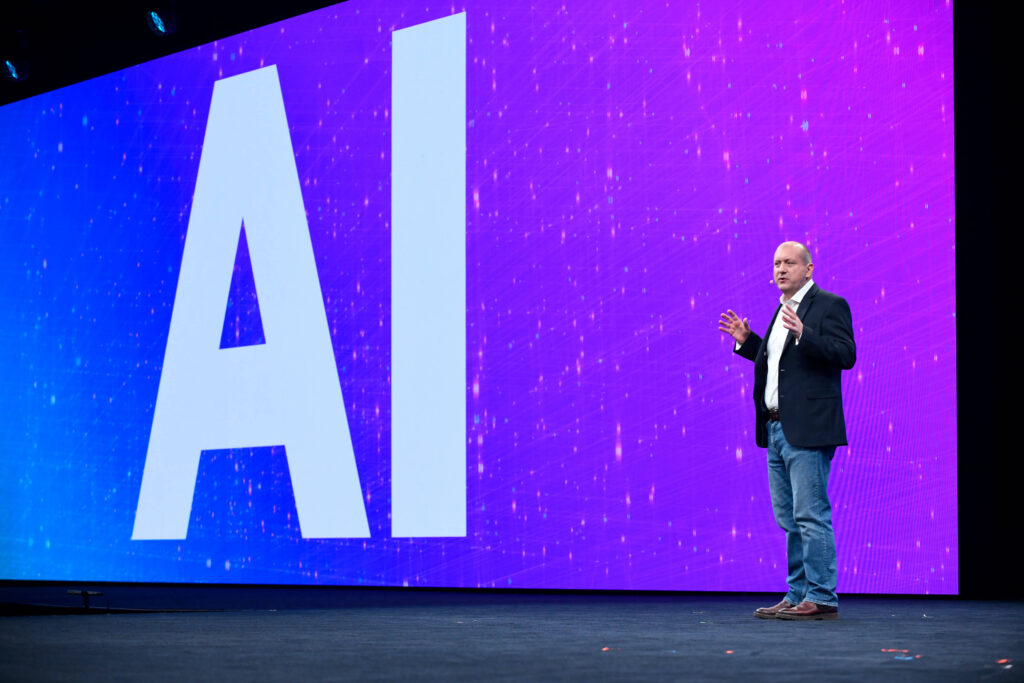AI and sustainability have become as dominant a fixture at vendor partner conferences in 2024 as Ant and Dec are on Saturday night primetime TV.
But the recent revelation that both Microsoft and Google’s carbon emissions are heading in the wrong direction has added fuel to concerns that the two themes – unlike the likeable Geordie pairing – are incompatible.
Hyperscaler emissions hikes
First, Microsoft confirmed in May that its total emissions have risen by 29% since 2020 as it constructs more datacentres to support AI workloads.
Then earlier this month, Google echoed this by fessing up to a 48% rise in total emissions over the last five years. Again, datacentre energy consumption and supply chain emissions were blamed.
The true implications on AI on sustainability “are becoming clearer, and more concerning”, Canalys wrote this month.
According to a report by Goldman Sachs, a ChatGPT query needs nearly 10 times as much electricity as a Google search.
So how is it that the big vendors are able to keep a straight face as they announce new sustainability badges for partners in one breath, only to unveil a groundbreaking AI investment in the next, critics may ask?

“Let’s not go overboard”
Not everyone is convinced that the two themes are necessarily contradictory, however, with Microsoft Co-Founder Bill Gates last month claiming that AI will be more of a help than a hindrance in achieving climate goals.
He urged journalists to see the bigger picture, saying AI would enable countries cut energy consumption by making technology and electricity grids more efficient.
“Let’s not go overboard on this,” Gates reportedly said. “Datacentres are, in the most extreme case, a 6% addition [in energy demand] but probably only 2% to 2.5%. The question is, will AI accelerate a more than 6% reduction? And the answer is: certainly.”
The partner position
Channel partner leaders can also see both sides of the debate, with Lyndsey Charlton, COO at Daisy Corporate Services, writing last week in a LinkedIn post, that AI “will provide many benefits to us”.
“Like a lot of technology, there’s good and bad, based on how we use it and who uses it! Let’s make sure there’s more of the good,” she said as she reposted a report on how the World Economic Forum is using AI to cut wildfire emergency response times.

Talking to IT Channel Oxygen, Alastair Wynn, Business Transformation Director at Softcat (pictured above), also cautioned against throwing the AI baby out with the bathwater.
“While some might look at the Microsoft and Google [emissions data] and think it’s a bit worrying, it underlines the need for us to bring these two important topics together,” he said.
AI can assist firms with mapping out a plan of action to tackle their emissions, Wynn stressed.
“One cannot be done without the other, and – to Bill Gates’ point – if we do the right things with AI with a solid underlying sustainability strategy, AI can help to accelerate progress on sustainability,” he explained.
Vlad Galabov, Director, Cloud and Data Center Research at analyst house Omdia, also took to LinkedIn to argue that questions about the sustainability of AI are getting “tiresome”.
AI “is not fundamentally unsustainable” but “what we as humans do with AI technology is unsustainable”, he claimed.
“Most enterprises are not using genAI en masse. Most consumer also do not use genAI,” he wrote.
“Instead of asking if AI is sustainable we should think twice before asking genAI models to produce pointless outputs,” he wrote (see below).
Emissions plans knocked off course
AI and sustainability continue to grab all the air time when it comes to vendor keynotes, breakout sessions and partner programme updates.
Unveiling its new ‘HPE Solutions for Sustainability’ competency at HPE Discover last month, HPE acknowledged the negative link between the two.

The new badge will help partners address and help minimise the impact of carbon emissions across the enterprise infrastructure vendor’s portfolio, “especially with the emergence of AI”, it said.
Wynn at Softcat said the giant reseller is similarly urging customers to take more of a holistic approach to AI and sustainability.
“AI requires more data, more power, more energy, but it is only a threat [to sustainability] if you don’t accelerate your progress on your sustainability plan to cater for the demand of what it will bring. If that doesn’t happen, ultimately it will create some challenges and friction,” he said.
But when it comes to the hyperscalers’ emissions, the two themes appear to have a chemistry more akin to Mick Fleetwood and Sam Fox than Ant & Dec.
Google itself admitted that cutting emissions “may be challenging” as it further integrates AI into its products.
Canalys stressed that the latest emissions data looks to have, at the very least, knocked the hyperscalers’ net zero plans off course.
“As companies continue to publicise their investments in AI, it becomes increasingly difficult to see how net zero commitments can be achieved alongside such substantial AI investments,” it stated.
Doug Woodburn is editor of IT Channel Oxygen

















